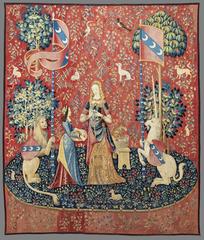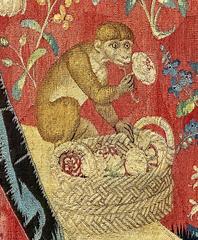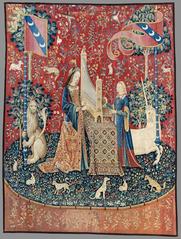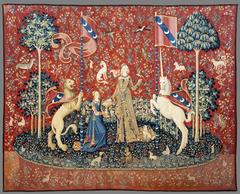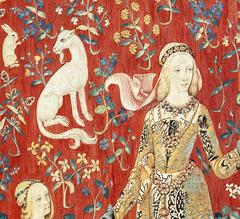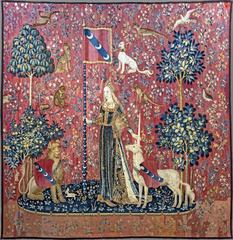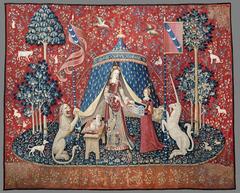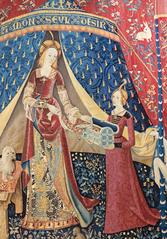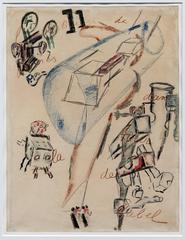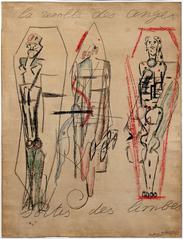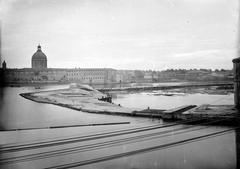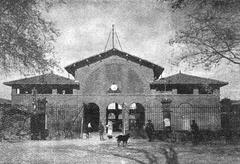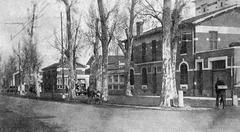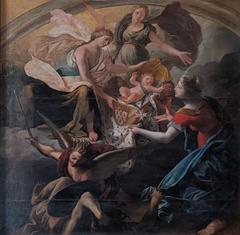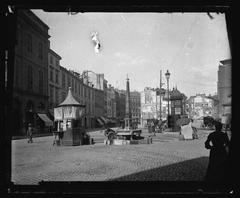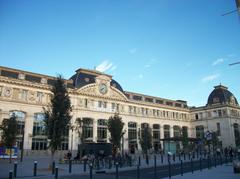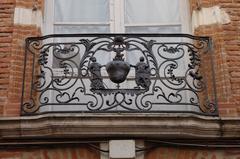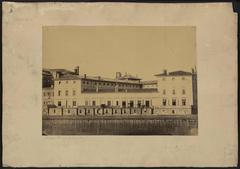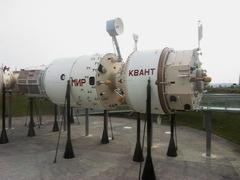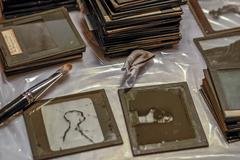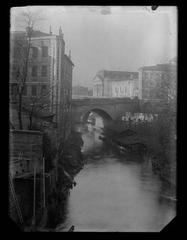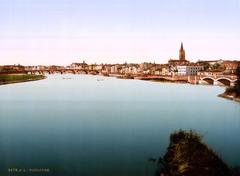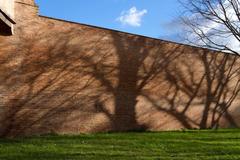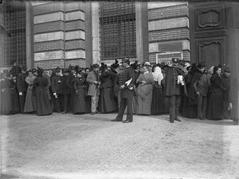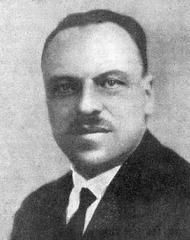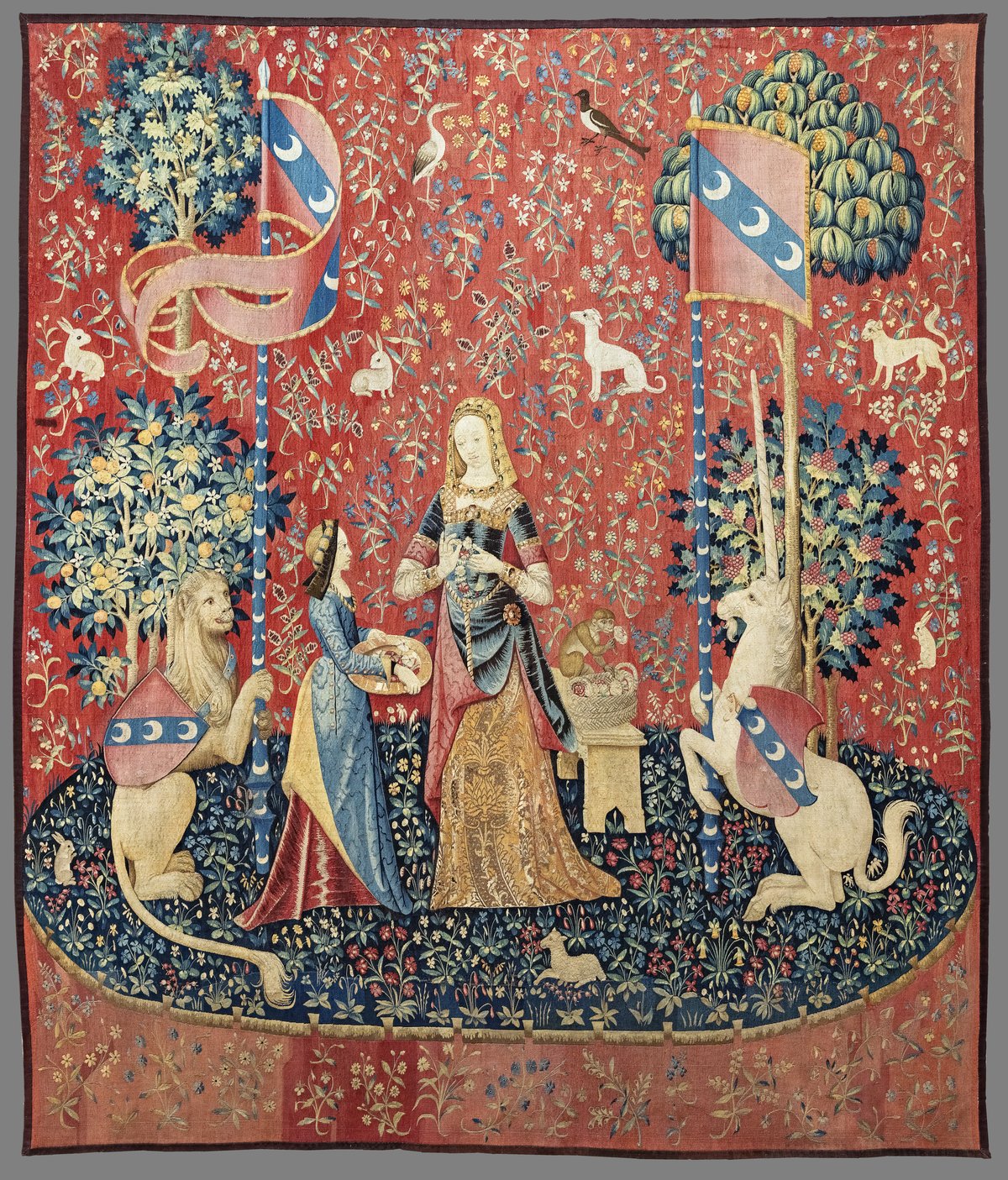
Les Abattoirs Toulouse: Visiting Hours, Tickets, and Historical Site Guide
Date: 14/06/2025
Introduction
Les Abattoirs, located in the vibrant Saint-Cyprien district of Toulouse, is a prime example of how industrial heritage can be reimagined as a hub for modern and contemporary art. Originally built in the late 19th century as the city’s main slaughterhouse, the site’s robust brick architecture and strategic location made it a landmark of Toulouse’s industrial era. Today, after an ambitious transformation in the late 20th century, Les Abattoirs stands as a dynamic museum and cultural center, drawing art enthusiasts, history lovers, and travelers alike (Les Abattoirs Official; TouristPlatform).
This guide provides comprehensive information on the museum’s history, architecture, collections, visitor services, accessibility, ticketing, and tips for making the most of your visit, including highlights of nearby Toulouse historical sites.
Table of Contents
- Historical Origins: From Slaughterhouse to Cultural Landmark
- Transformation and Architecture
- Institutional Model and Collections
- Cultural and Urban Impact
- Visiting Information: Hours, Tickets, and Access
- Facilities and Accessibility
- Visitor Tips and Highlights
- Nearby Attractions
- FAQs
- Summary and Recommendations
- Sources
Historical Origins: From Slaughterhouse to Cultural Landmark
19th-Century Foundations:
Constructed in the late 1800s and designed by Urbain Vitry, Les Abattoirs originally served as Toulouse’s main slaughterhouse. Its imposing brickwork, iron frameworks, and utilitarian design reflected the city’s industrial boom and need for modern infrastructure (TouristPlatform).
Decline and Abandonment:
By the late 20th century, shifting urban needs and health regulations led to the site’s abandonment. However, its distinctive architecture and central location made it an ideal candidate for cultural redevelopment (Les Abattoirs Official).
Transformation and Architecture
Visionary Project:
In the 1990s, local associations and authorities launched a project to turn the defunct slaughterhouse into a museum dedicated to modern and contemporary art. The transformation was guided by a commitment to preserve the site’s industrial character while introducing new cultural functions (Les Abattoirs Official).
Redevelopment (1997–2000):
Architects Antoine Stinco and Rémi Papillault led the conversion, retaining the original brick façades, spacious interiors, and iron structures. Modern elements—such as new galleries, an auditorium, a resource center, and visitor amenities—were integrated to serve the museum’s new role (Espace Toulouse).
Architectural Features:
- Preserved industrial elements
- Modern galleries and facilities
- Outdoor spaces for events and exhibitions
Institutional Model and Collections
A Hybrid Institution:
Les Abattoirs uniquely merges the Musée d’Art Moderne et Contemporain de Toulouse with the FRAC Occitanie, bringing together over 3,800 works—from early 20th-century modernism to contemporary art (Les Abattoirs Collections; Wikipedia).
Notable Highlights:
- Picasso’s monumental stage curtain La Dépouille du Minotaure en costume d’Arlequin (1936)
- Works by Miró, Matisse, Dalí, Bacon, and other influential artists
Multidisciplinary Spaces:
- Resource center and archives
- Educational workshops and artist encounters
- Auditorium for performances and screenings
- Bookshop and restaurant (Les Abattoirs Official)
Collection Diversity:
The museum’s holdings include significant examples of post-war abstraction, art informel, as well as works from the Mediterranean, Africa, and South America. A focus on gender parity and inclusivity shapes ongoing acquisitions (lesabattoirs.org).
Cultural and Urban Impact
Revitalizing Saint-Cyprien:
Les Abattoirs has been instrumental in the cultural renewal of the Saint-Cyprien district, attracting galleries, creative businesses, and community events, and reinforcing Toulouse’s reputation as an artistic hub (Espace Toulouse).
Model for Adaptive Reuse:
The successful fusion of historic preservation with contemporary use has made Les Abattoirs a reference for adaptive reuse in France and beyond (TouristPlatform).
Visiting Information: Hours, Tickets, and Access
Location:
76 Allées Charles de Fitte, 31300 Toulouse (Official Les Abattoirs Site)
Opening Hours:
- Wednesday to Sunday: 12:00 PM – 6:00 PM
- Extended hours on Thursdays until 8:00 PM (except during school holidays)
- Closed Mondays, Tuesdays, and major holidays (Guide Tourisme France)
Admission Fees:
- Standard ticket: €10
- Reduced: €6–€8 (students, groups, Thursday evenings after 6 PM)
- Free: Under 6, first Sunday of each month, visitors with disabilities and their companion
- Group and membership options available (Cityzeum; Les Abattoirs Accessibility)
Guided Tours:
- Wednesdays and Saturdays at 2:00 PM (additional fee, advance booking advised)
Getting There:
- Metro: Line A (Saint-Cyprien – République station)
- Bus: Lines 14, 66, 44
- Tram: T1 (Fer à Cheval)
- Parking: Place Saint Cyprien (but public transport is recommended)
Facilities and Accessibility
- Cloakroom: Lockers for coats and small bags (bring a padlock); large bags and scooters not permitted
- Restrooms: Accessible facilities on all levels
- Wheelchair Access: Full accessibility, including priority elevators, ramps, and accessible toilets
- Assistance Services: Wheelchairs, cane-seats, pushchairs available on request (ID may be required)
- Support for Disabled Visitors: Braille/large-print documents, tactile tours, magnetic loops, LSF videos, and free admission for companions (Museum For All)
- Bookshop: Art books, exhibition catalogs, and unique gifts
- Library: Artists’ books and documentation center (by appointment)
- Café-Restaurant Hémicycle: Light meals and refreshments, with terrace seating in the sculpture garden (Les Abattoirs FAQ)
Visitor Tips and Highlights
- Photography: Non-flash photography permitted; check signage for restrictions
- Language: Most signage in French; English guides and leaflets available
- Family-Friendly: Workshops, pushchairs, and baby-changing facilities provided
- Wi-Fi: Free for visitors
- Events: Regular artist talks, concerts, and workshops (Les Abattoirs Events)
- Best Times to Visit: Weekday mornings/afternoons to avoid crowds
Nearby Attractions
Explore other Toulouse highlights within walking distance:
- Musée des Augustins: Western art from the Middle Ages to the early 20th century (PlanetWare)
- Place du Capitole: The city’s iconic square, just 15 minutes away
- Fondation Bemberg: Renaissance to early 20th-century art (WhichMuseum)
- Basilique Saint-Sernin: UNESCO-listed Romanesque church
- Saint-Cyprien Market: Local delicacies and lively atmosphere
- Muséum de Toulouse, Halle de La Machine, Cité de l’Espace: Further afield, accessible by public transport
Saint-Cyprien itself is a multicultural neighborhood, perfect for strolling and sampling Toulouse’s culinary specialties (Cityzeum).
FAQs
Q: Can I buy tickets online?
A: Yes, via the official website.
Q: Is the museum accessible for visitors with disabilities?
A: Yes, including wheelchair access, Braille, tactile tours, and support staff.
Q: Are guided tours available in English?
A: Yes, but advance booking is recommended.
Q: Can I take photos?
A: Non-flash photography is allowed in most areas.
Q: Are there family-friendly activities?
A: Yes, with workshops and special events for children.
Q: Is there an on-site café?
A: Yes, the Hémicycle Café-Restaurant serves meals and refreshments.
Summary and Recommendations
Les Abattoirs is a standout example of cultural regeneration, successfully blending Toulouse’s industrial heritage with a vibrant commitment to modern and contemporary art. Its unique hybrid model and extensive collections make it a must-visit for art lovers and cultural explorers. With accessible facilities, diverse programming, and proximity to other historical sites, Les Abattoirs is ideal for families, groups, and solo travelers alike.
For a seamless visit:
- Check opening hours and book tickets in advance.
- Allow extra time to explore nearby attractions in Saint-Cyprien and central Toulouse.
- Download the Audiala app for audio guides and stay updated via social media.
Whether you’re an art enthusiast or a casual visitor, Les Abattoirs offers a rich and inspiring glimpse into Toulouse’s past and present.
Sources
- Les Abattoirs Official, 2025, Les Abattoirs Toulouse: A Historical Monument (Les Abattoirs Official)
- TouristPlatform, 2025, Les Abattoirs Toulouse’s Museum of Modern Art (TouristPlatform)
- Espace Toulouse, 2025, Les Abattoirs de Toulouse, un modèle hybride de succès culturel (Espace Toulouse)
- Les Abattoirs Collections, 2025, Presentation of the Collections (Les Abattoirs Collections)
- Wikipedia, 2025, Les Abattoirs (Wikipedia)
- musees-occitanie.fr, 2025, Les Abattoirs, Musée – Frac Occitanie Toulouse (musees-occitanie.fr)
- Cityzeum, Les Abattoirs Toulouse (Cityzeum)
- Guide Tourisme France, Les Abattoirs (Guide Tourisme France)
- Museum For All, Les Abattoirs (Museum For All)
- WhichMuseum, Les Abattoirs (WhichMuseum)
- PlanetWare, Toulouse Attractions (PlanetWare)
- Eternal Arrival, Winter in Toulouse (Eternal Arrival)
- Toulouse Secret, Exhibitions in Toulouse (Toulouse Secret)
- FranceRent, Les Abattoirs Toulouse (FranceRent)
- GPSmyCity, Les Abattoirs (GPSmyCity)
